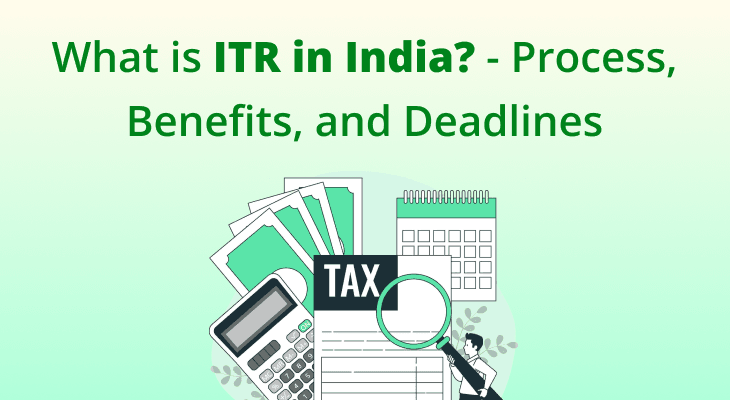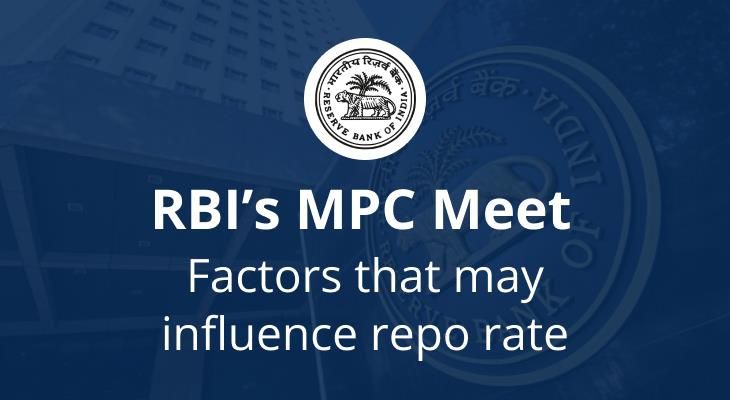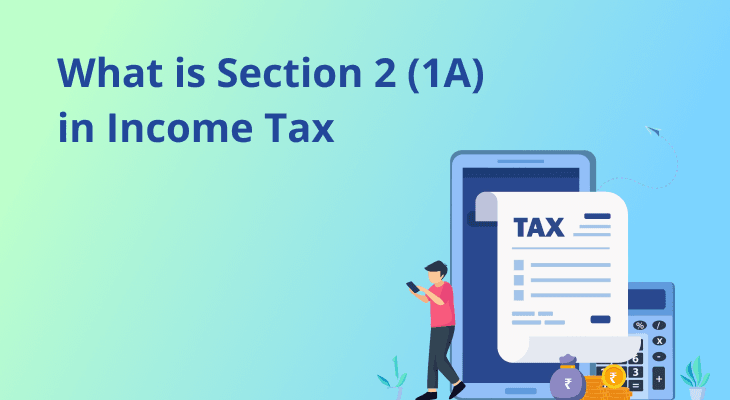
What is ITR in India? Process, Benefits, and Deadlines Explained
The more you earn, the more tax you pay, and the less you take home – simple math! But did you know that filing an ITR or Income Tax Return in India can challenge this equation? Earning more does not always mean paying more tax. With an ITR, you can claim deductions and exemptions, reduce your taxable income and lower your tax liability. This article dives into the nuances of ITR filing and how it can help you stay tax-compliant while maximising tax savings.
Income tax filing in India: What is an ITR?
Income tax plays a pivotal role in the economic growth of any country. To ensure compliance, the IT department requires taxpayers to file an ITR, a formal declaration of their gross total income for a given financial year.
An ITR helps tax authorities track income and prevent tax evasion. The form includes details of income, deductions, exemptions and tax liability. Different types of ITR forms cater to different taxpayer profiles, making it essential to choose the one that applies to your case.
Who needs to file an ITR in India?
As per the Income Tax (IT) Act, 1961, filing an ITR is mandatory in the following cases:
- You have a taxable income as per the latest applicable slabs
- You want to claim a tax refund
- You have paid taxes in foreign countries and wish to claim a foreign tax credit
- You wish to carry forward losses to subsequent years
- You have received a notice from the IT department
- You are a Non-Resident Indian (NRI) with taxable income in India
- Your business turnover exceeds ₹60 lakh
- Your gross receipt from your profession exceeds ₹10 lakh
- Your tax withheld in the form of Tax Deducted at Source (TDS)/Tax Collected at Source (TCS) exceeds ₹25,000 (₹50,000 for individuals above 60 years)
Additionally, you must file an ITR if you have conducted any of the following specified financial transactions:
- Deposited an aggregate amount exceeding ₹1 crore in one or more bank accounts
- Incurred expenses of more than ₹2 lakh on foreign travel for yourself or any other person
- Spent more than ₹1 lakh on electricity in a financial year
- Deposited an aggregate amount exceeding ₹50 lakh in one or more savings bank accounts
Steps to file an ITR in India
Filing your ITR online is a straightforward process. Here’s a step-by-step guide:
- Visit the official IT e-filing website to access the ITR filing portal.
- Log in with your Permanent Account Number (PAN) and password. If you are a first-time user, complete the registration process.
- Initiate filing by navigating to e-File > Income Tax Return > File Income Tax Return.
- Select the relevant assessment year and opt for the online mode of filing.
- Click on Resume Filing or Start New Filing as applicable.
- Select your applicable taxpayer status/category and choose the appropriate ITR form.
- Provide details of your total income and deductions to calculate your tax liabilities accurately.
- If you have no tax liability or are eligible for a refund, review and submit the form. If any tax is due, make the payment using any of the available options.
- After successful payment, carefully review all entered details to ensure correctness.
- Proceed with validation and complete your verification process.
- Upon successful submission and verification, you will receive an acknowledgement with a transaction ID and acknowledgement number. A confirmation message will also be sent to your registered mobile number and email address.
Documents required for filing an ITR
The documents needed for filing taxes vary across different categories of taxpayers. However, some common documents include:
- PAN card
- Aadhaar card
- Form 26AS, Annual Information Statement (AIS) and Taxpayer Information Summary (TIS)
- Form 16A, 16B, 16C
- Salary pay slips
- Bank statements
- Interest certificates
- Proof of tax-saving investments
Online vs. offline ITR filing
You can file your ITR either online or offline. Both these methods offer distinct advantages.
Here’s a quick comparison to help you choose a suitable mode:
You can choose to file your ITR online if:
- You are looking for faster processing
- You are seeking the convenience of filing from anywhere
- You are looking to leverage built-in checks to minimise manual errors
- You want to receive instant acknowledgements
- You want quick error correction methods
You can choose to file your ITR offline if:
- You are seeking more hands-on control over the entire process
- You have limited access to technology or are not comfortable with digital platforms
- You want to avoid digital risks and technical glitches
- You prefer to gather and organise documents physically
Key deadlines for filing an ITR in India
To understand the deadlines for filing ITRs, you must first know the following terms:
Financial Year (FY): The 12-month period from April 1 to March 31 in which you earn the income.
Assessment Year (AY): The year immediately following the FY in which you must declare your income and pay the corresponding taxes by filing your ITR.
ITR filing deadlines and penalties
Cases | Due date in AY | Penalties |
Taxpayers who are not subject to tax audits | July 31 |
|
Taxpayers who are subject to tax audits, except for those involved in transfer pricing cases | October 31 | Same as above |
Taxpayers who are involved in transfer pricing cases and must furnish a report under Section 92E of the IT Act, 1961 | November 30 | Same as above |
Revised or belated ITRs | December 31 | ₹10,000 if the total income exceeds ₹5 lakh ₹1000 if the total income is below ₹5 lakh
|
Updated returns (Pre-budget 2025) | Up to 24 months after the end of the AY |
|
Updated returns (Post-budget 2025) | Up to 48 months after the end of the AY |
|
Common mistakes to avoid while filing ITR
Filling the ITR correctly is crucial to avoid penalties and legal hassles. It is also necessary to ensure timely refunds and maintain peace of mind.
Here are some common mistakes to avoid while filing your ITR:
Mistakes | Consequences |
Choosing the wrong ITR form | May lead to incorrect tax calculation or rejection of the return |
Entering incorrect personal details | Can delay refunds |
Underreporting income | Can trigger tax notices, scrutiny and potential penalties |
Not e-verifying the ITR on time | Will render the ITR invalid, leading to penalties and interest |
Missing the filing deadline | May lead to interest penalties, delayed refunds, and disrupted financial planning |
Not reconciling income and tax deductions with Form 26AS and Form 16 | Can lead to discrepancies, tax scrutiny and notices |
ITR refund process
If the taxes you already paid during the year exceed the amount you are liable to pay, you are entitled to claim a tax refund. The IT department will initiate your refund after validating your refund claim.
To claim the refund, you must file your ITR and make sure to e-verify your return. Generally, it takes about four to five weeks to get a refund. If you do not receive your money within this time, you must check your refund status through the IT or National Securities Depository Limited portal. You must also recheck your ITR for any errors or discrepancies that may have caused the delay. Additionally, keeping an eye on your registered email for any updates from tax authorities helps.
Conclusion
An ITR is an essential tax document for reporting income tax liabilities. Carefully filing an ITR on time is key to staying tax-compliant and avoiding penalties.
An Income Tax Calculator helps you estimate how much tax you need to pay based on your income, deductions, and exemptions. Use our Income Tax Calculator to understand your tax liability better and plan smarter to save more.


